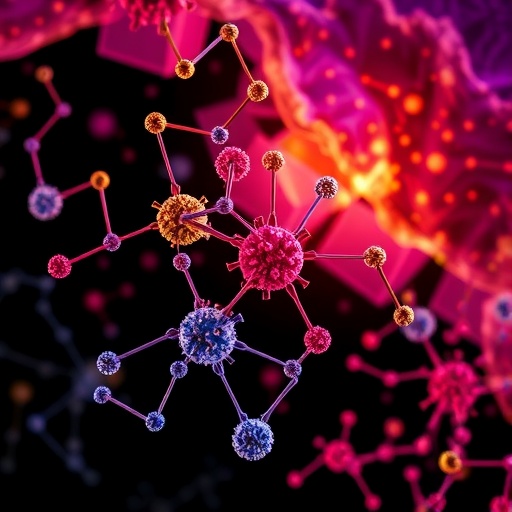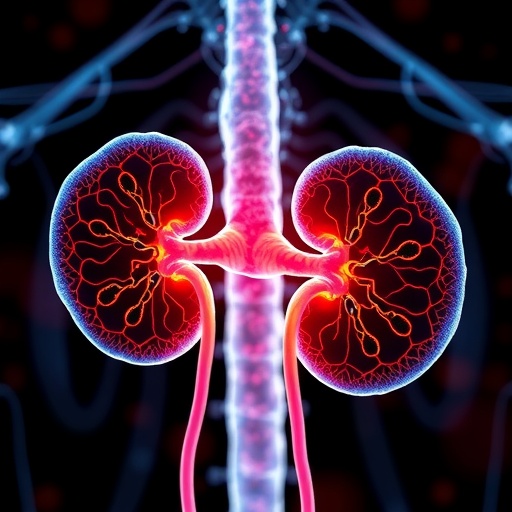In a groundbreaking study published in Nature Communications, researchers have unveiled profound insights into the genetic and molecular underpinnings of Type 2 Diabetes (T2D) by exploring plasma protein and metabolite quantitative trait loci (QTL) across diverse ancestries. This large-scale analysis specifically contrasts European and African ancestry populations, shedding light on ancestry-specific pathways that drive T2D pathogenesis. Departing from a one-size-fits-all paradigm, this research pioneers a precision medicine approach that accounts for ancestral genetic diversity to better understand T2D risk factors and potential therapeutic targets.
Type 2 Diabetes represents a complex interplay between genetics, environment, and metabolic regulation. While genome-wide association studies (GWAS) have cataloged numerous risk variants linked to T2D, the functional mechanisms by which such variants influence disease remain elusive. Crucially, most genetic studies to date disproportionately focus on populations of European descent, limiting generalizability. By incorporating African ancestry cohorts, this investigation addresses a critical gap, offering a more comprehensive landscape of the molecular architecture influencing T2D.
Central to this study is the integration of protein-QTL (pQTL) and metabolite-QTL (mQTL) analysis performed on plasma samples. These approaches identify genomic loci that exert cis- and trans-effects on circulating proteins and metabolites, which are direct effectors or markers of disease phenotypes. The team employed state-of-the-art high-throughput proteomics and metabolomics platforms, combined with dense genotype imputation leveraging population-specific reference panels, enhancing the resolution of molecular trait mapping.
.adsslot_Lz7qMNE30P{ width:728px !important; height:90px !important; }
@media (max-width:1199px) { .adsslot_Lz7qMNE30P{ width:468px !important; height:60px !important; } }
@media (max-width:767px) { .adsslot_Lz7qMNE30P{ width:320px !important; height:50px !important; } }
ADVERTISEMENT
One of the novel aspects of the study is the identification of ancestry-specific pQTLs and mQTLs that differentially influence T2D risk. For example, certain protein variants associated with inflammation and insulin signaling pathways manifest stronger genetic regulation in African ancestry individuals, whereas lipid metabolism-related proteins tend to be more tightly regulated in European descent populations. These disparate molecular signatures underscore the heterogeneity in T2D etiologies conditioned by genetic background.
Moreover, the researchers constructed ancestry-specific molecular networks linking QTLs with established T2D GWAS signals. This integrative approach revealed a subset of effector proteins and metabolites whose genetic control is modulated by ancestry, highlighting candidates that may drive differential disease susceptibility or progression. Among these, proteins involved in glucose homeostasis, adipokine signaling, and mitochondrial function emerged as key nodes in African ancestry cohorts, contrasting with European-specific markers implicated in cholesterol biosynthesis and inflammatory cascades.
The methodology employed addresses a crucial limitation in prior studies—the underrepresentation of diverse ancestries in multi-omics investigations. By explicitly modeling population stratification and employing sophisticated statistical fine-mapping techniques, the study reduces confounding and enhances the identification of causal variants. This pipeline also enables the detection of pleiotropic QTLs, which modulate multiple proteins or metabolites, providing a granular understanding of shared molecular pathways relevant to T2D.
Importantly, the study also evaluated the phenotypic consequences of these ancestry-specific molecular QTLs by correlating protein and metabolite levels with clinical parameters such as insulin resistance indices, glycemic control, and lipid profiles. This functional validation strengthens the evidence that identified molecular effectors are not merely genetic markers but potential drivers of metabolic dysregulation. These findings pave the way for biomarker development that is sensitive to genetic ancestry, improving early diagnosis and personalized risk stratification.
In addition to uncovering molecular effectors, the research highlights evolutionary pressures shaping genetic diversity in T2D-related loci. Several pQTLs and mQTLs exhibiting strong allele frequency differences between European and African populations also correspond to signatures of positive selection, suggesting adaptation to local environmental factors such as diet or pathogen exposure. This evolutionary perspective enriches the biological context of T2D susceptibility and may inform future pharmacogenomic strategies.
The implications of this research extend into drug discovery and therapeutic intervention. Identification of ancestry-specific molecular targets allows for the tailoring of drug development pipelines to capture genetic diversity, potentially mitigating disparities in treatment response. For instance, proteins uniquely modulated in African ancestry populations could serve as novel pharmacological targets or inform repurposing of existing drugs to improve efficacy and safety profiles.
From a technical standpoint, the study exemplifies the power of combining high-dimensional omics data with population genetics. The use of advanced computational frameworks for QTL mapping and network analysis facilitates the disentanglement of complex genetic architectures. Furthermore, the open sharing of summary statistics and analytical tools by the authors promotes reproducibility and fosters collaborative efforts to expand upon these discoveries.
This research also underscores the importance of investing in biobanks and cohort studies that encompass diverse populations. Such resources are invaluable in elucidating the molecular bases of common diseases and bridging health disparities fueled by a historical underrepresentation of non-European ancestries in biomedical research. The study advocates for systematic inclusion of diverse ancestries in future omics and clinical investigations.
Looking forward, the integration of environmental, lifestyle, and multi-omics data—including transcriptomics and epigenetics—could further refine our understanding of T2D pathophysiology across ancestries. Longitudinal studies that monitor molecular trajectories in at-risk individuals would complement these findings and help delineate causal mechanisms from secondary effects.
In conclusion, this landmark investigation offers a nuanced, ancestry-aware view of the plasma proteome and metabolome, illuminating critical molecular effectors that drive Type 2 Diabetes within different genetic backgrounds. By bridging gaps in diversity and functionality, it empowers a shift towards personalized medicine doors open to all populations. This paradigm shift holds promise for more equitable healthcare innovations targeting one of the most pervasive global metabolic diseases.
Subject of Research:
Ancestry-specific plasma protein quantitative trait loci (pQTL) and metabolite quantitative trait loci (mQTL) analyses to identify molecular effectors and mechanisms underlying Type 2 Diabetes risk in European and African ancestry populations.
Article Title:
European and African ancestry-specific plasma protein-QTL and metabolite-QTL analyses identify ancestry-specific T2D effector proteins and metabolites.
Article References:
Yang, C., Gorijala, P., Timsina, J. et al. European and African ancestry-specific plasma protein-QTL and metabolite-QTL analyses identify ancestry-specific T2D effector proteins and metabolites. Nat Commun 16, 7412 (2025). https://doi.org/10.1038/s41467-025-62463-w
Image Credits:
AI Generated
Tags: African ancestry researchAncestry-specific proteinsEuropean ancestry comparisongenetic diversity in T2Dgenome-wide association studies limitationsmetabolite quantitative trait locimolecular mechanisms of T2Dplasma protein analysispQTL and mQTL analysisprecision medicine for diabetestherapeutic targets for diabetestype 2 diabetes risk factors





